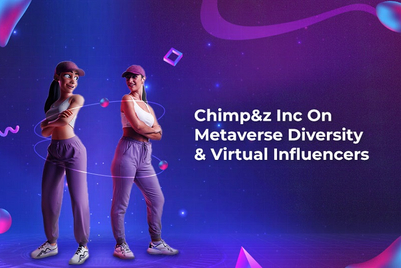
Even as a lot of brands grapple with the mechanics of social media influencer marketing, the ecosystem is already undergoing a system update. We are now talking about digitally created virtual characters as influencers on social media. An invention of artists and tech companies, virtual influencers are being touted as the biggest thing since sliced bread. Or should I say, since the loudspeaker, in the context of marketing?
Virtual influencers eliminate the limitations of humans in social media marketing. Remember Charlie Chaplin’s ‘Modern Times’? The 1936 satirical comedy was a comment on the distress created by the efficiencies of the machine over manual labour. Approaching 2023, the relentless winds of modernity continue to sweep us off the ground. These digital characters with date of births and unfurling life stories give the brand greater control and ownership over content than when collaborating with human influencers. They facilitate limitless scalability and engagement. They also safeguard the brand from cancel culture which keeps human influencers vulnerable. But this only covers the marketer’s perspective.
A major chunk of the chatter around virtual influencers seems to be about how it’s a human-proof marketing tool that never ages or dies or falls sick and has a following large enough for leading brands across the globe to be engaging them. Including Prada, KFC, Samsung and Ikea. The first ever was by French fashion brand, Balmain way back in 2018. That’s only four years ago. But, in digital marketing years, that’s probably akin to 400. It is about time, we delved deeper into what draws audiences to virtual influencers. Let us attempt to decode the audience's perspective.
Does the growing pull of virtual influencers point at a fading appeal in authenticity? The popularity of human social media influencers over the conventional movie and sports celebs was attributed to authenticity and realness which the audience found easier to relate to, believe and enjoy. So, was it never about authenticity? Was it simply about novelty? Perhaps, yes. After all, there’s nothing more robotic than monotony. If robots can be unpredictable and fun, they could be loveable, relatable, comforting, motivating etc. Perhaps, what the audience is drawn to is not merely authenticity but an authentic understanding of who they are and what they need.
Mainstream celebs were still made to represent notions of beauty, love, success, happiness and aspirations from the analogue era until social media influencers represented updated realities. They mirrored and guided through the unique trials and triumphs of a life that had been governed by the internet for 2/3rds of their young lives. And today, virtual characters seem to carry the baton forward by doing the same for the generation that has been immersed in the internet from the time they were born. It is no surprise that the definitions of real and virtual are blurring.
For this upcoming generation, anything or anyone with a back-story, hopes, fears and passions to pursue is real. The obvious popular themes in the young zeitgeist seem to be gender fluidity, sensitivity towards mental wellness, career fluidity, inclusivity, planet preservation, self-exploration, smashing judgements, smashing hierarchies, smashing the patriarchy, collaboration over competition etc. The resulting struggles possibly would be reconciling one’s real and virtual identity, coping with confusion about identity in general, growing fear of trusting/falling in love, cyberbullying, self-pressure to explore all possibilities etc. Virtual influencers manage to identifiably demonstrate an authentic understanding of the themes and struggle that matter to this audience. And that is possibly why they find followers, subscribers and fans.
What makes virtual influencers work, amazingly enough, is having a heart.
(The author is a freelance strategic planner with a career spanning 18 years.)



.jpg&h=334&w=500&q=100&v=20250320&c=1)
.jpg&h=334&w=500&q=100&v=20250320&c=1)
.jpg&h=334&w=500&q=100&v=20250320&c=1)



.jpg&h=334&w=500&q=100&v=20250320&c=1)



.jpg&h=268&w=401&q=100&v=20250320&c=1)



.jfif&h=268&w=401&q=100&v=20250320&c=1)
.jpg&h=268&w=401&q=100&v=20250320&c=1)
.jpg&h=268&w=401&q=100&v=20250320&c=1)
